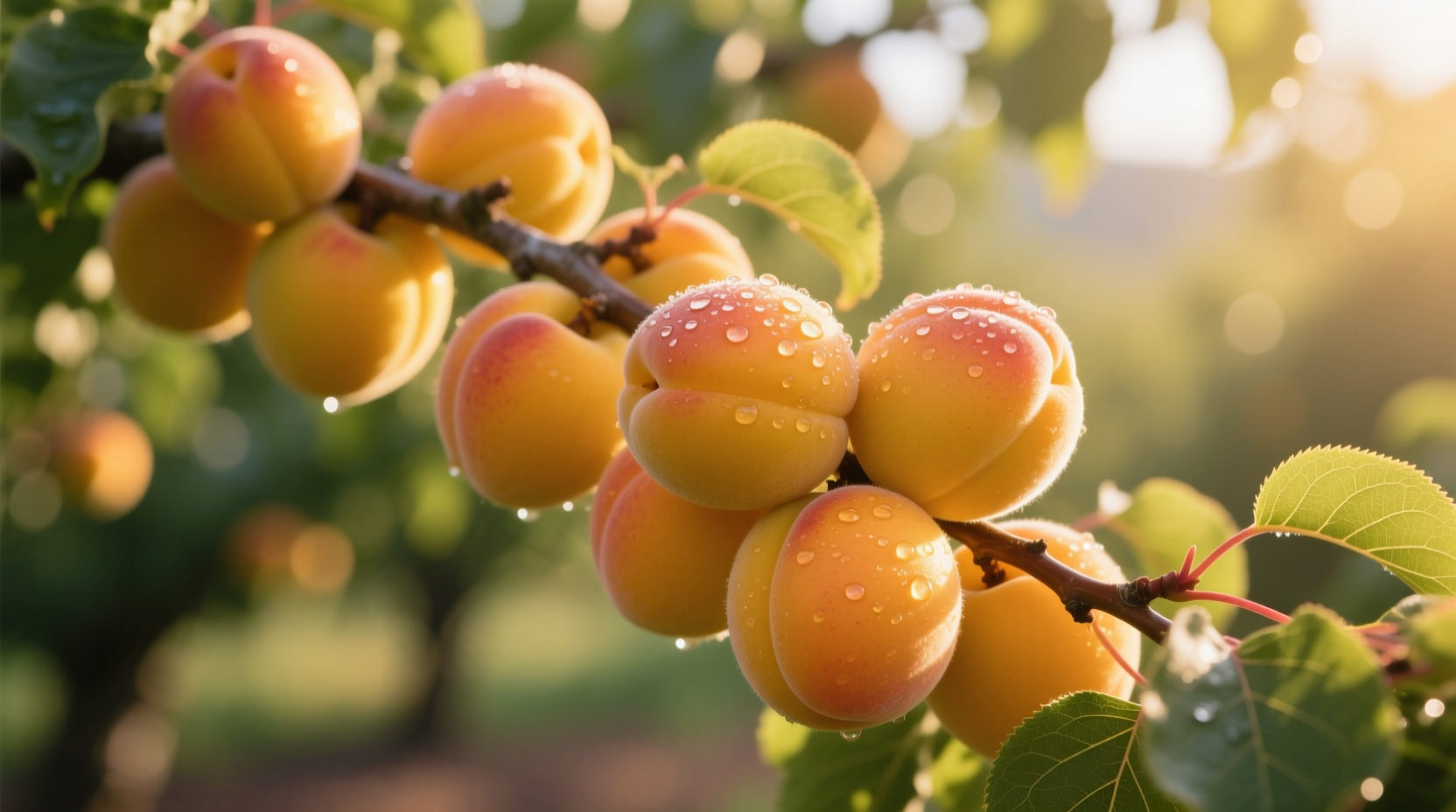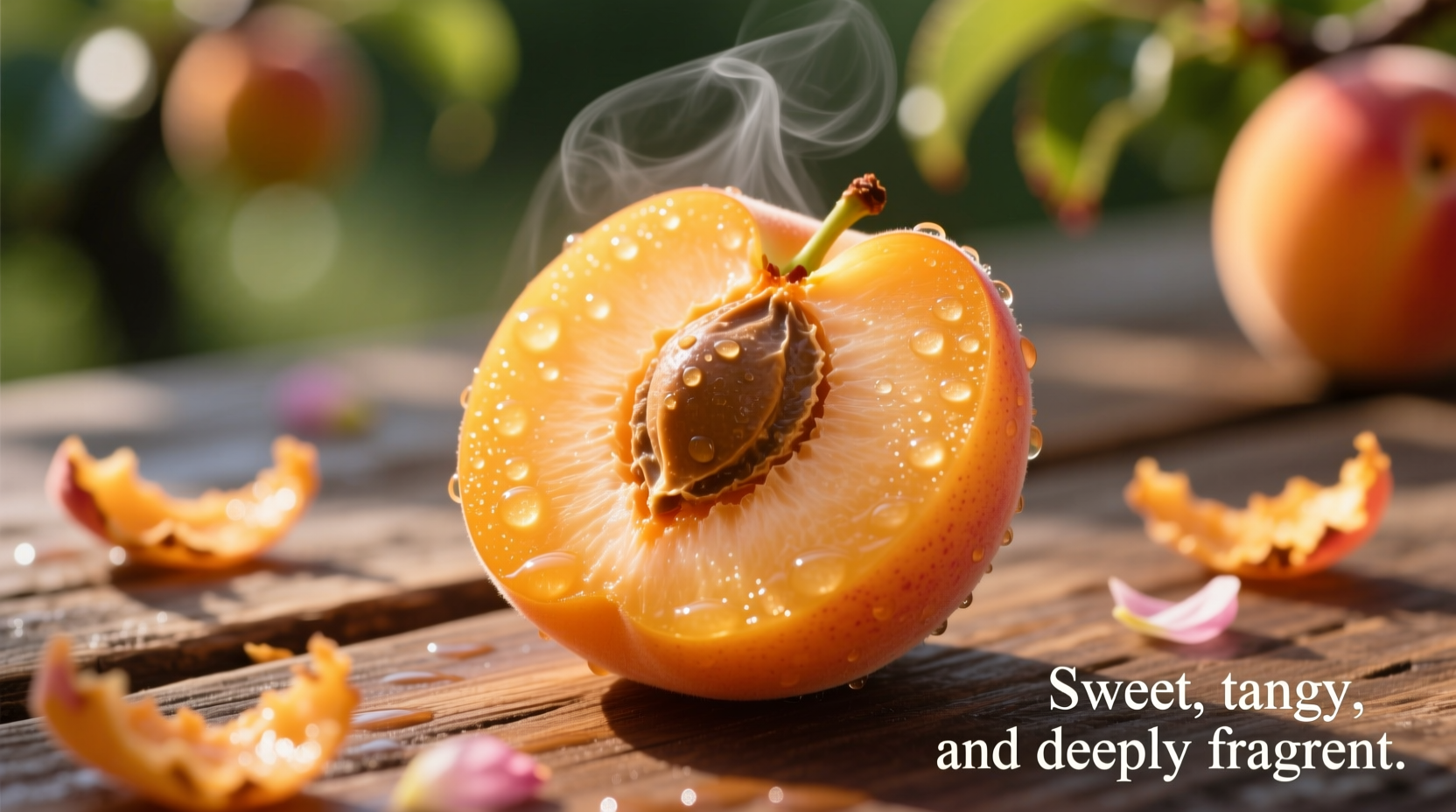Ever wondered what makes apricots stand out in the stone fruit family? If you've hesitated to try these golden-orange gems because you're unsure about their flavor, you're not alone. Understanding what do apricots taste like is crucial for selecting the best specimens and using them effectively in recipes. This guide delivers precise sensory details you won't find elsewhere, helping you determine whether apricots match your palate preferences and how to maximize their unique flavor in your kitchen.
The Complete Apricot Flavor Profile
Apricots deliver a sophisticated flavor experience that changes dramatically with ripeness. At their peak, they balance three key elements:
- Sweetness level: Moderate sugar content (about 9-14° Brix) creates honey-like sweetness without overwhelming intensity
- Acidity: Noticeable but gentle tartness (pH 3.3-4.0) that enhances rather than dominates
- Aromatic compounds: Over 40 volatile compounds contribute floral, citrus, and subtle almond notes
Unlike their larger stone fruit cousins, apricots maintain a refined flavor complexity even when fully ripe. The what does an apricot taste like experience features a distinctive finish where the sweetness recedes to reveal delicate berry-like undertones, particularly near the skin.
How Ripeness Transforms Apricot Flavor
Your apricot tasting experience depends entirely on ripeness. This progression follows a predictable pattern verified by USDA agricultural studies:
| Ripeness Stage | Taste Characteristics | Texture | Best Uses |
|---|---|---|---|
| Firm (green undertones) | Pronounced tartness, minimal sweetness, green apple notes | Firm, almost crunchy | Pies, tarts, chutneys |
| Perfectly ripe | Ideal sweet-tart balance, honeyed notes, floral aroma | Yielding but holds shape | Fresh eating, salads, light preserves |
| Overripe | Intense sweetness, fermented notes, diminished acidity | Very soft, almost mushy | Jams, sauces, smoothies |
According to research from the University of California's Department of Plant Sciences, apricots continue developing flavor compounds for 2-3 days after harvest when stored at room temperature. This post-harvest maturation explains why grocery store apricots often taste bland—they're typically picked underripe for shipping durability. For the authentic what do apricots taste like experience, seek locally grown specimens allowed to ripen on the tree.
Apricots vs. Similar Stone Fruits: A Flavor Comparison
Many people wonder how apricots compare to more familiar stone fruits. While related to peaches and plums, apricots occupy a unique flavor niche:
- Apricots vs peaches: Apricots have more pronounced tartness and complex floral notes compared to peaches' straightforward sweetness. Their flavor is more concentrated despite smaller size.
- Apricots vs nectarines: Nectarines offer juicier texture but simpler flavor profile. Apricots provide more nuanced aromatic complexity with less water content.
- Apricots vs plums: Plums generally have higher sugar content and deeper berry notes, while apricots feature brighter citrus undertones and lighter body.
Food scientists at Cornell University's Food Chemistry Lab have identified that apricots contain higher concentrations of linalool—a compound responsible for floral notes—than most other stone fruits. This explains their distinctive perfume-like aroma that makes what does an apricot taste like such a multi-sensory experience.

Regional Variations in Apricot Flavor
Apricot taste varies significantly by growing region due to climate and soil conditions. Historical cultivation patterns reveal interesting flavor evolution:
The earliest cultivated apricots in Central Asia (dating back 4,000 years) were primarily valued for their tartness, used in savory applications. As cultivation spread along Silk Road trade routes to Mediterranean regions, selective breeding emphasized sweetness. Modern varieties reflect this journey:
- Armenian varieties (like Armeniaca vulgaris): Most complex flavor with pronounced tartness
- California varieties (Blenheim, Tilton): Balanced sweet-tart profile, honey notes
- Turkish varieties: Higher sugar content, less acidity
- French varieties (from orchards near Valensole): Distinctive floral notes with subtle almond finish
These regional differences matter when answering what do apricots taste like—a Blenheim apricot from California offers a completely different experience than a Turkish Hacihaliloglu variety. For the most authentic flavor experience, seek heirloom varieties when in season (May-July in the Northern Hemisphere).
How to Select the Best-Tasting Apricots
Knowing what do apricots taste like is useless if you can't find good specimens. Follow these science-backed selection techniques:
- Color check: Look for deep golden-orange hue without green undertones (green indicates underripeness)
- Scent test: Ripe apricots emit a distinct floral aroma at room temperature—no scent means underripe
- Gentle pressure: Should yield slightly at stem end but remain firm elsewhere
- Shoulder examination: The area around the stem should be rounded, not flat (flat indicates early picking)
According to agricultural research from the USDA's National Clonal Germplasm Repository, apricots develop optimal flavor when allowed to ripen on the tree until the "shoulder" separates naturally from the stem. Commercial growers typically harvest 3-5 days before this stage, sacrificing flavor for shipping durability. This explains why locally grown apricots consistently deliver superior what does an apricot taste like experience compared to supermarket varieties.
Culinary Applications Based on Flavor Profile
Understanding apricot flavor characteristics unlocks their culinary potential:
- Fresh eating: Enjoy perfectly ripe specimens at room temperature to experience the full sweet-tart balance
- Baking: Underripe apricots hold shape better in tarts while developing complex flavors during cooking
- Preserves: The ideal sugar-acid ratio makes apricots self-balancing for jams without added pectin
- Savory pairings: Complement duck, pork, and lamb with apricot chutney—their tartness cuts through rich meats
- Drink infusions: Steep dried apricots in spirits to extract their complex flavor compounds
Professional chefs note that apricots' moderate acidity makes them exceptionally versatile. Unlike peaches which can become cloying, apricots maintain flavor complexity even when cooked. This characteristic explains their popularity in Middle Eastern and Central Asian cuisines where what do apricots taste like matters for balancing rich meat dishes and grain preparations.
Common Flavor Misconceptions
Several myths persist about apricot flavor that affect people's expectations:
- Myth: All apricots taste similar to peaches Reality: While related, apricots have more complex flavor chemistry with distinctive floral notes
- Myth: Apricots should be extremely sweet Reality: Properly ripe apricots maintain noticeable tartness—complete sweetness indicates overripeness
- Myth: The pit flavor affects fruit taste Reality: While the pit contains amygdalin (bitter almond compound), it doesn't transfer to ripe fruit
These misconceptions often lead to disappointment when trying to answer what do apricots taste like for the first time. Setting proper expectations based on scientific understanding of apricot flavor development creates more satisfying tasting experiences.











 浙公网安备
33010002000092号
浙公网安备
33010002000092号 浙B2-20120091-4
浙B2-20120091-4